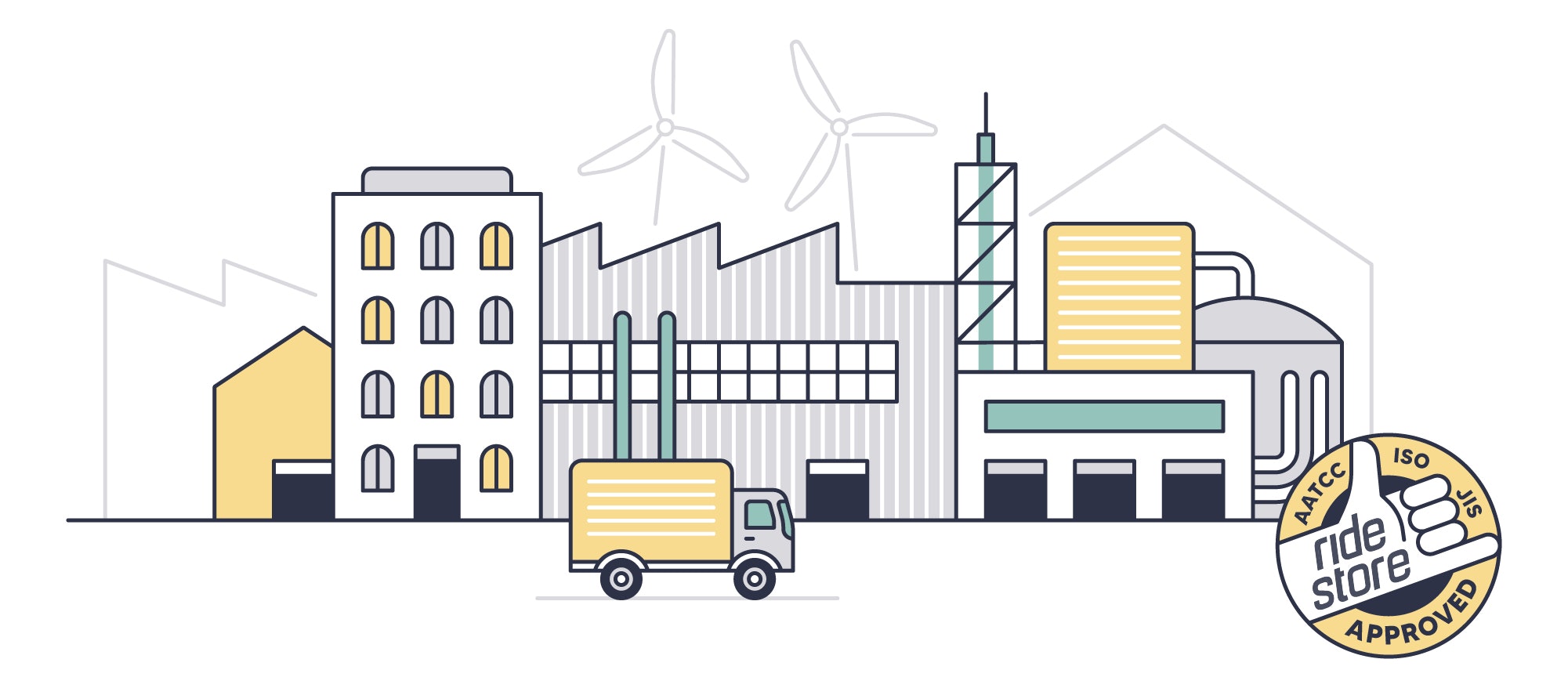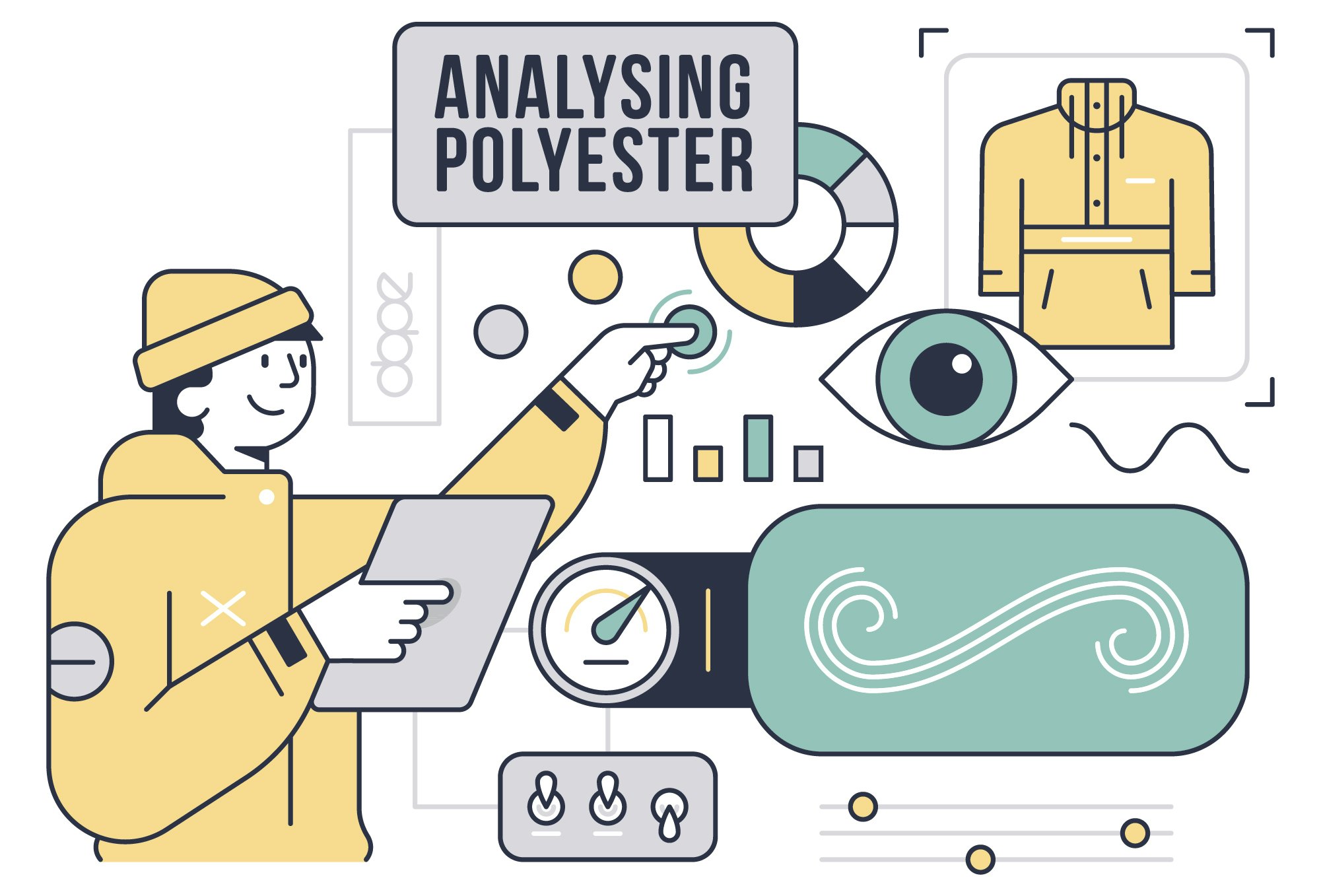Why durability is built into every fibre
We are in the business of producing high-performance gear that is built to last. In every weave and twist, our clothes are designed for quality to last a lifetime.

We want our clothes designed for superior performance - gear that is comfy, waterproof, windproof and breathable with all the features you need for a long day on the slopes.
But if we’re going to tackle climate change and conserve nature, we all need to produce and consume less, including in the world of snow sports gear. So we also want to make our gear durable.
By making gear that delivers season-after-season, we reduce the demand to harvest virgin fibres or process new plastics. As lovers of the great outdoors, we have a vested interest in protecting it.
That’s why, in every step of the process, from the fibre to the finishing, we are making choices and testing to help marry sustainability and high performance into the final fabric.
Mapping our route
To illustrate our approach, let’s look at the stages of making our most used recycled polyester fabric.

First, we test and approve the factory where the work takes place. From recycling raw materials through to weaving houses to dyeing factories, every place that has a role in making your Dope and MONTEC gear is found by us, inspected by us, and tested by us – with tests managed using the respected ISO, AATCC and JIS standards.
At the fibre level, we test for quality and for high levels of recycled material (unfortunately, our industry often labels fibres as ‘recycled’ when barely half the bundle is actually recycled).

When it comes to weaving we’ve chosen a dense, plain weave which offers extra durability and boosts water resistance.
Our choice of yarn is also significant. There are hundreds of potential polyester yarn suppliers we could opt for, but we looked to work only the very best suppliers in recycled polyester, with proven credentials for both material quality and sustainability. Our recycled polyester yarn has 77% less CO2 emissions and 87% less energy usage than if we were to use virgin polyester (and their emissions data is third party verified).
Finally, once we have the fabric we undertake a series of tests for durability, waterproofness and breathability – all to make sure that the gear is long lasting no matter what the mountain throws at it.
So, what does make our fabrics so durable and long-lasting?
Strength and durability are vital, so we use 150D/144F yarn with a very high twist, which guarantees a high level of resilience.
Our dense weave offers superior durability while significantly boosting water repellency and resistance, with a total yarn density of 192T (Warp + Weft).
Being light and watertight is crucial. Weighing 182 grams per square meter, our fabric is treated with HeiQ EcoDry PFC-free Durable Water Repellent (DWR), reducing residual dye or chemicals.
Central to our fabric's waterproofing capabilities is a PFC-free 20-micron thermoplastic polyurethane membrane (TPU) membrane, which maintains high waterproofing even after ten washes. Our lamination process is entrusted to a bluesign® partner.
Please scroll to the bottom of the article for a detailed breakdown of our testing methods and results. We decided to include a RADICALLY EXTREME amount of information about the precise nature of our testing methods and fabric standards?! We aren’t shy about sharing.
Sustainability is not solely about making something long-lasting, we also work with organisations like bluesign®, with supply chain partners and many others to ensure safe and fair supply chains and to reduce plastic packaging, emissions and water use.
We’ll keep pushing forward, pursuing our passion for creating comfortable outdoor gear that endures season after season while helping to sustain the slopes we all love to ride on.
Measures the force required to continue a tear that has already started under specific conditions.
Minimum requirements - 13N x 13N
Ridestore promise - 34.24N x 34.74N
Quantifies the maximum stress a fabric can endure before breaking, demonstrating its strength in high-stress applications.
Minimum requirements - 800N x 800N
Ridestore promise - 1078.32N x 823.98N
By measuring a fabric's ability to withstand surface wear, this test provides insight into its durability, especially regarding regular wear and washing.
Minimum requirements - No yarn breakage after 30,000 revolutions and no change in shade after 7,000 rubs.
Ridestore promise - No yarn breakage after 50,000 revolutions and maintaining color stability after 7,000+ rubs.
This assessment gauges a fabric's resistance to the formation of small, fibrous balls on its surface, ensuring its appearance and texture remain intact over time.
Minimum requirements - Grade 4.0 (out of 5.0) after 7,000 cycles.
Ridestore promise - Perfect score of 5.0 after 7,000 cycles.
This test evaluates a garment's durability, particularly at the seams, under stress, ensuring the garment's structure maintains its integrity.
Minimum requirements - 3mm at 120N.
Ridestore promise - Less than 3mm at 120N.
These tests affirm a fabric's ability to maintain its original colour under washing conditions and, due to rubbing, safeguarding the garment's aesthetic appeal.
Minimum requirements - 3% variation after three 40°C, 45-minute wash/dry cycles.
Ridestore promise - -0.2% in warp and -1.0% in weft.
These tests affirm a fabric's ability to maintain its original colour under washing conditions and due to rubbing, safeguarding the garment's aesthetic appeal.
Minimum requirements - Grade 4.0 in dry and wet conditions.
Ridestore promise - Often exceeding grade 4.0 in dry and wet conditions.
Water repellency tests assess a fabric's ability to resist surface wetting. These tests are vital for outdoor and performance fabrics, where resistance to precipitation is often a key selling point.
Minimum requirements - Grade 4.0 before wash and Grade 3.0 after ten washes. Retaining 80% repellency after ten washes.
Ridestore promise - Grade 4.0 both before and after ten washes. 100% water repellency before wash and 90% water repellency after ten washes.
This test measures a fabric's resistance to the penetration of water under hydrostatic pressure. Waterproofness is crucial for outerwear fabrics, ensuring wearers stay dry in rainy or snowy conditions.
Minimum requirements - Brand-specific
Ridestore promise - Brand-specific
Breathability refers to the rate of moisture vapour passing through a piece of fabric. This test is essential in determining a fabric's breathability, which can greatly affect the comfort of the wearer in various weather conditions. Each of these tests plays a pivotal role in ensuring our fabrics meet the highest standards of quality and durability, offering our customers the best possible product.
Minimum requirements - Brand-specific
Ridestore promise - Brand-specific